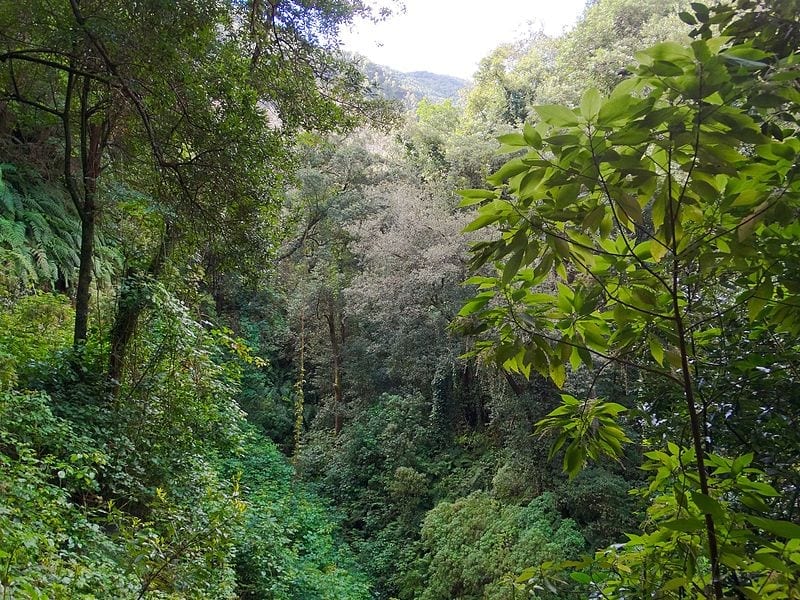
Image - Wikimedia / Fährtenleser
Have you heard of laurel forest? On the planet we live on we find different ecosystems, each one with its own living conditions, and in regions with a warm and humid temperate climate inhabit very particular plants. Many of them are grown in gardens, as they not only have great ornamental value, but also adapt well to different environments.
So if you want to know what are the characteristics of the laurel forests, where they are found, what flora inhabits them, and much, much more, do not miss this post.
What is the origin of laurel forest?
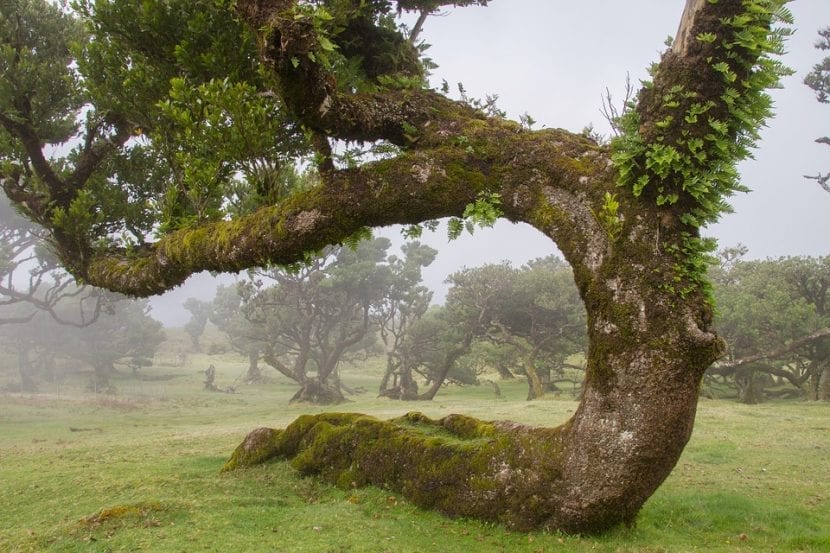
About 66 million years ago, much of the Earth's tropics was inhabited by laurel forest. At that time, what we know today as the Mediterranean basin, Eurasia and Northwest Africa enjoyed a much warmer climate than there is today, and the flora that existed is believed to be very similar to that of the current forests of Macaronesia. .
When the ice ages occurred, at the end of that period and part of the Quaternary, the polar caps were extended, so temperatures dropped across the planet, thus displacing the flora of central and southern Europe towards regions further south, towards the northwestern coast of Africa and the Macaronesian archipelagos.
At the end of the ice age, the deserts of North Africa began to spread, so that the flora in these areas was gradually replaced by one that was better resistant to drought. Thus the Mediterranean plants began their evolution.
However the tertiary flora of Macaronesia wanted to regain their lost territory, although it was not easy for them- The climate is warmer and drier than during the Tertiary Era, so you had no choice but to adapt. Currently, these changes have allowed unique species to evolve, which inhabit only very specific areas.
Features
The laurel forest, also called temperate forest or laurel forest, it is a type of cloud forest with a subtropical climate; that is, they are places with a high degree of humidity, warm, and with very mild or absent frosts. The four seasons are defined, although the annual variation in temperature is moderate. And if we talk about rainfall, they are abundant and well distributed, something that means that there is not a dry season properly speaking.
These conditions occur in the following regions:
- islands located between 25 and 40º South latitude: as in the Canary archipelago, Madeira, Wild Islands, Azores and Cape Verde.
- western coasts of the west between 40º and 55º of latitude: coasts of Chile, from Valdivia to the south of the continent.
- Eastern margin of the continents between 25º and 35º latitude: southeast of Brazil, Argentina, Paraguay and Uruguay.
What is the Canarian laurel forest like?
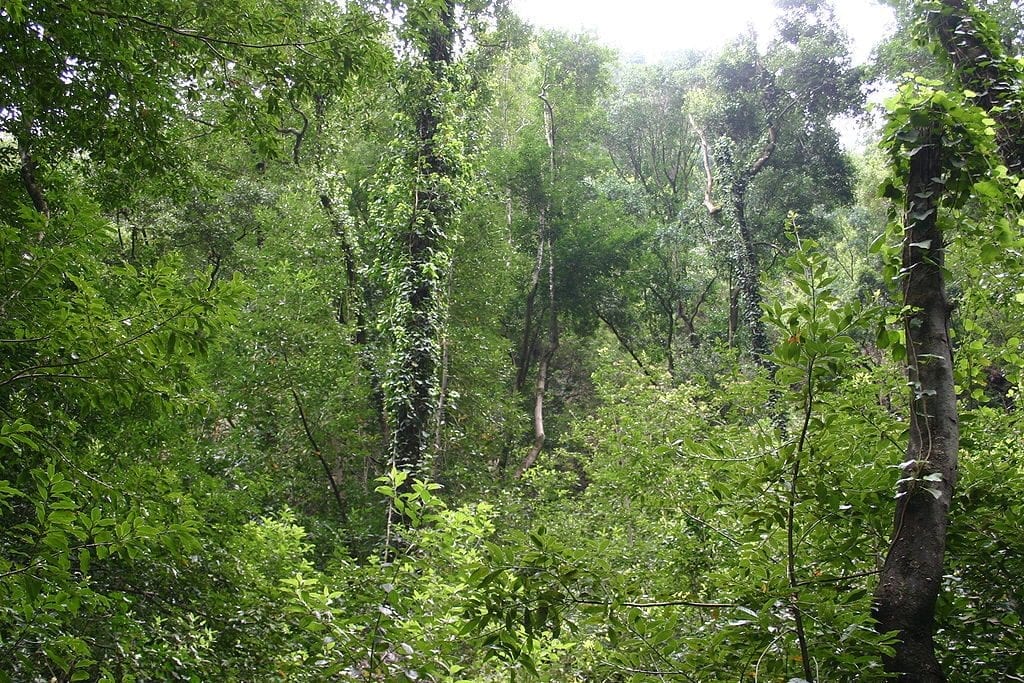
La Palma
Image - Flickr / MPF
It is a type of subtropical forest found in some of the Canary Islands. It is characterized by having deep soils, rainfall between 500 and 100mm, and an average temperature between 15 and 19ºC.
We will find its origin in the tertiary period, more than 20 million years ago. At that time it was spreading over a large part of the Mediterranean basin, but the glaciations at the end of the period and during the Quaternary were moving it towards warmer areas, such as North Africa and Macaronesia. When temperatures began to recover, it spread into the deserts of North Africa.
To this day, it is one of the forests that has undergone the least evolutionary transformations, so that the Canarian laurel forest is one of the natural jewels of Europe. In fact, as such it has been recognized by UNESCO: the Garajonay National Park was declared a National Heritage Site in 1981 and a World Heritage Site in 1986; the Canal and Los Tilos de la Palma, were declared a Biosphere Reserve in 1983; and the Anaga Rural Park, in Tenerife, is a Biosphere Reserve.
Curiosities of the laurel forest of Tenerife
The one that Tenerife has is wonderful. Visiting the forests of the Anaga and Teno, Aguagarcía and Tigaiga massifs is like traveling to the past, specifically to the Tertiary. They have changed practically nothing since they originated, so it is not difficult to get an idea of what laurel must have been like when it was at its best.
Plants such as viñátigo, wild orange, heather or willow, among others, grow in the island's mountains, turning them into spectacular landscapes.
What is the flora of the laurel forest?
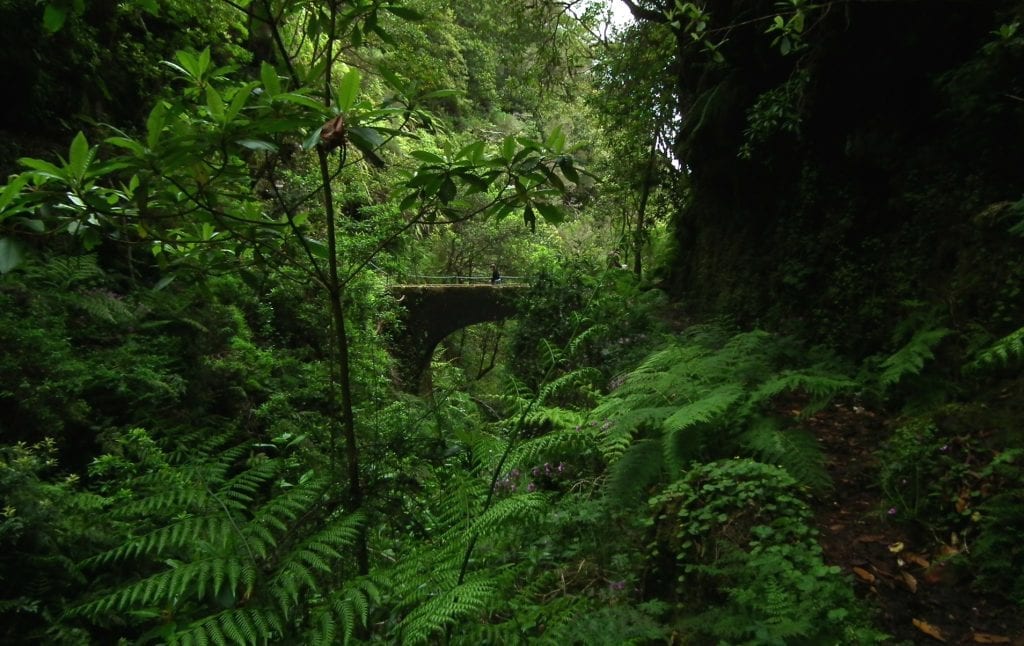
Wood.
Image - Wikimedia / Luismiguelrodrigues
Although laurel forest means laurel forest in Latin, the reality is that the plants that we can find in these places are not just laurels; yes there may be, but more than these bushes / trees what there is is lauroid type flora. This means that they resemble the Laurus, specifically their leaves.
And it is that, when you are a plant if you want to survive you must avoid excess humidity, which is just what the Laurus do: if you have ever noticed, you will have noticed that its leaves are leathery, and in addition to that they are covered by a layer of wax, which makes them stay dry despite the humidity. In addition, they have an apical mucron that favors dripping, so it is very easy to stay in good health in these conditions.
Lauroid-type plants have very interesting strategies for survival. And not only the one I just told you about, but also others, such as:
- Lianoid growth: there are many that grow leaning and / or entangling themselves in trunks and branches to be able to capture as much sunlight as possible.
- Epiphytism: some what they do is germinate and grow on tree branches or large plants.
Thus, depending on the area, and especially the hemisphere, the laurel forests will be inhabited by:
North Hemisphere
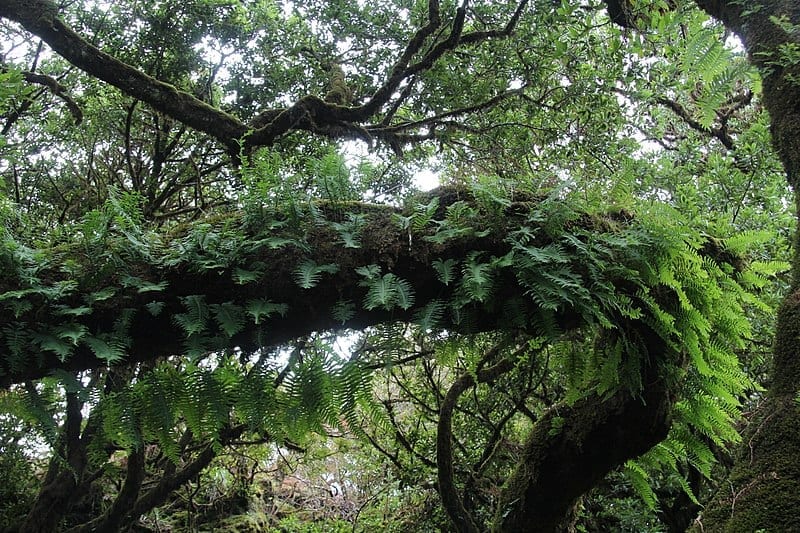
Image - Wikimedia / GerritR
The most common are:
- Persecute: it is a genus of evergreen trees originating from the Neotropics, Southeastern USA, East and Southeast Asia, and islands of Macaronesia. They can reach heights of between 15 and 30 meters, and produce fruits that are usually edible. The best known species is the Persea americana (avocado or avocado).
- Prunus: It is a genus of deciduous or evergreen trees and shrubs that reach a height of between 4 and 12 meters. Many species produce edible fruits, such as the Prunus armeniaca (apricot), Almond (almond) or Prunus (peach tree). See file.
- Maytenus: it is a genus of small trees or shrubs, mainly native to America, but also in South Asia, Africa, northwest of the Canary Islands, and northeast of Ethiopia. They reach heights between 5 and 7 meters.
- ocotea: is a genus of evergreen trees and shrubs native to Central and South America, the West Indies, and Africa including Madagascar. They reach heights between 4 and 15 meters.
- ilex: it is a genus of shrubs or evergreen trees native to the temperate regions of the northern hemisphere. The best known species is the Holly aquifolium (holly).
- Quercus: it is a genus of evergreen or deciduous trees native to Europe, Western Asia, North and South America that usually reach heights of up to 20 meters.
- Laura: is the genus of an evergreen shrub or tree native to the Mediterranean region. It can reach a height of 5 to 10 meters.
- ferns: they are a series of plants native to the warm and humid temperate regions of the world, which can grow as low plants (most) or as shrubs (dicksonia, Blechnum, etc.).
Southern hemisphere
In addition to those that we will see in the northern hemisphere, very peculiar conifers also grow, such as:
- Araucaria: is the genus of a series of conifers native to South America, Norfolk Island, eastern Australia and New Guinea. They can reach heights of 20 meters or more. See file.
- Nothofagus: is the genus of a series of trees known as southern beech native to Australia, New Zealand, Chile, Argentina, New Guinea and New Caledonia. See file.
What is your current situation?
Laurisilva is being severely damaged by humans. Although the species that grow in it are generally hardy and vigorous, the pressure it supports is very great. Deforestation, either to harness wood or to grow other "more useful" species, is destroying forests around the world, endangering a large number of plant and animal species.